Abstract
Sixteen patients with clinical chancroid were studied prospectively; different culture media and sampling techniques from genital lesions were evaluated. Technique A was aspiration of a saline wash from the ulcer which was pooled and inoculated into rabbit blood, rabbit blood + vancomycin (5 microgram/ml), and semisolid chocolate agar + vancomycin (3 microgram/ml). Each primary culture medium was subcultured to chocolate agar with 1% IsoVitaleX (CA), CA with vancomycin (3 microgram/ml) plus polymyxin (7.5 microgram/ml; CA + vp). Technique B was the use of a cotton swab, plated directly on CA, CA + v, and CA + vp. Nine strains of Haemophilus ducreyi were obtained. Technique A yielded seven strains, whereas technique B yielded eight strains; with each technique, five strains were isolated only after use of selective antibiotic media. CA + v medium yielded the largest number of isolates. Direct inoculation by swab to CA + v from chancroidal ulcers is effective as an isolation technique for growth of H. ducreyi.
Full text
PDF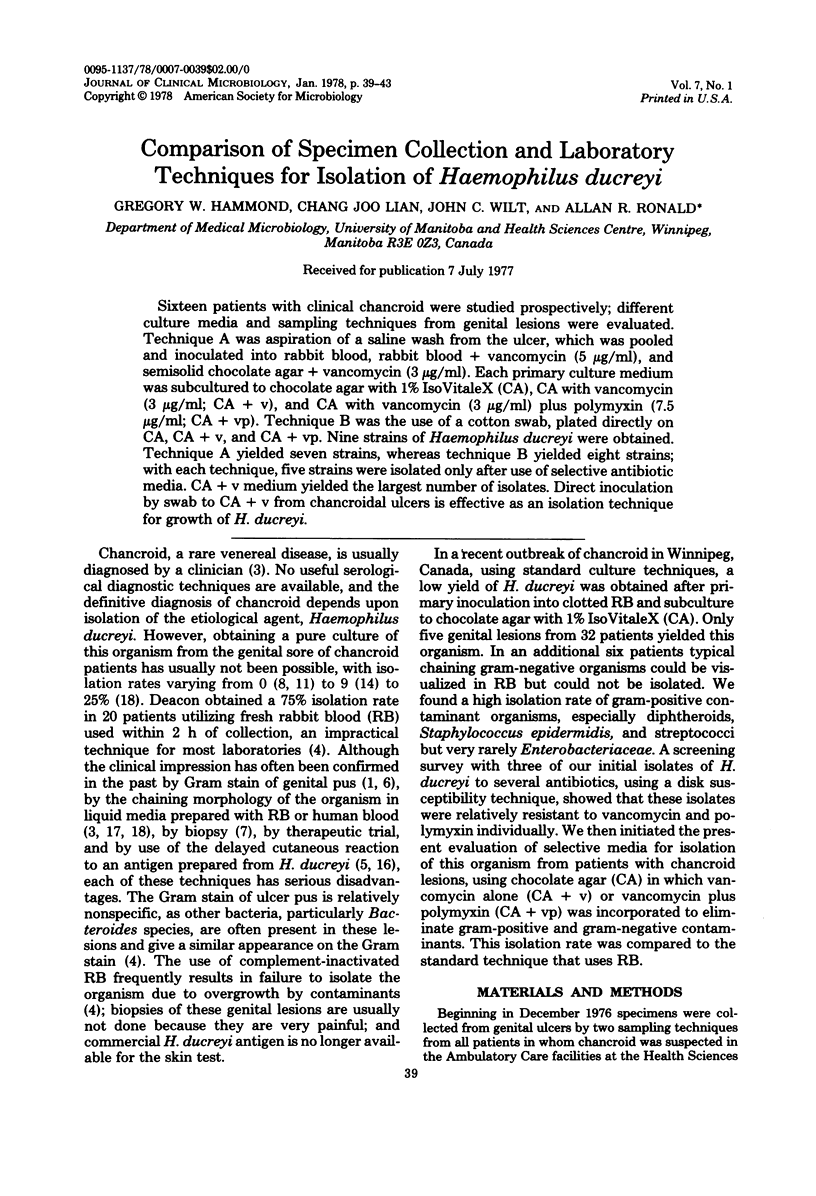
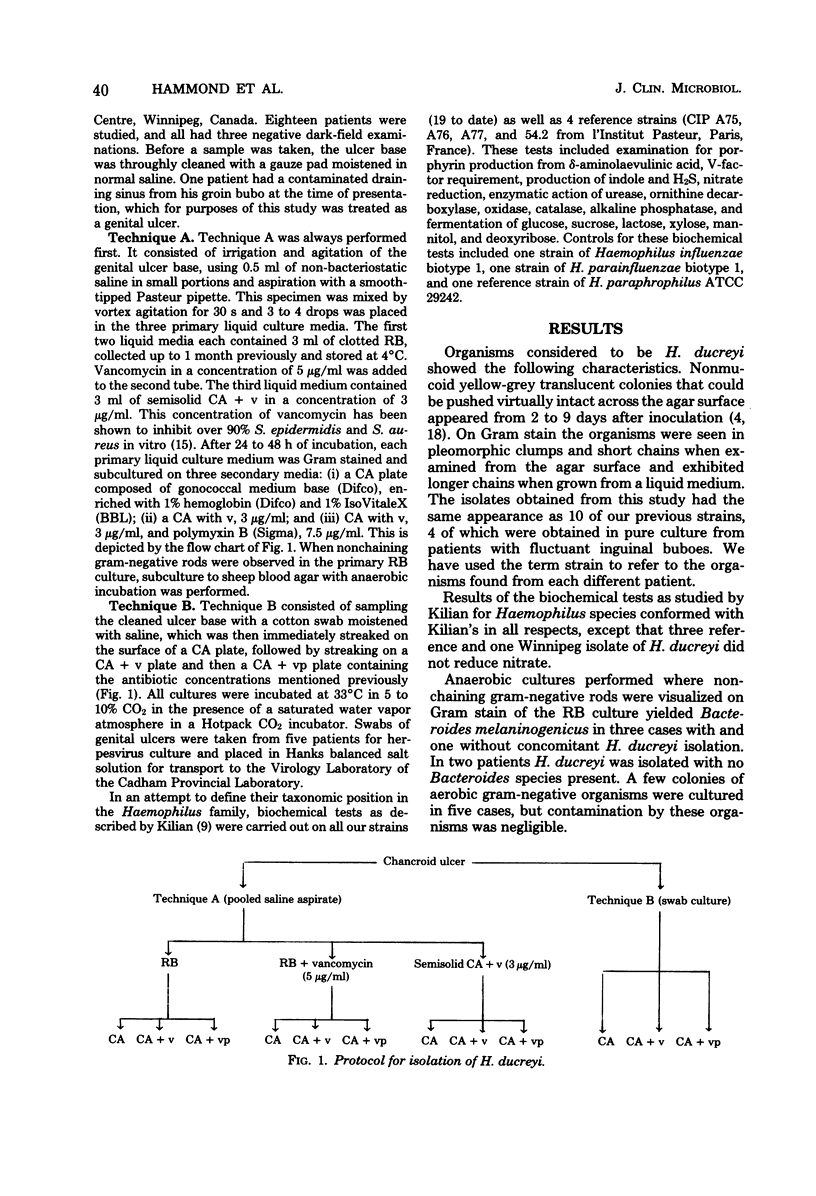
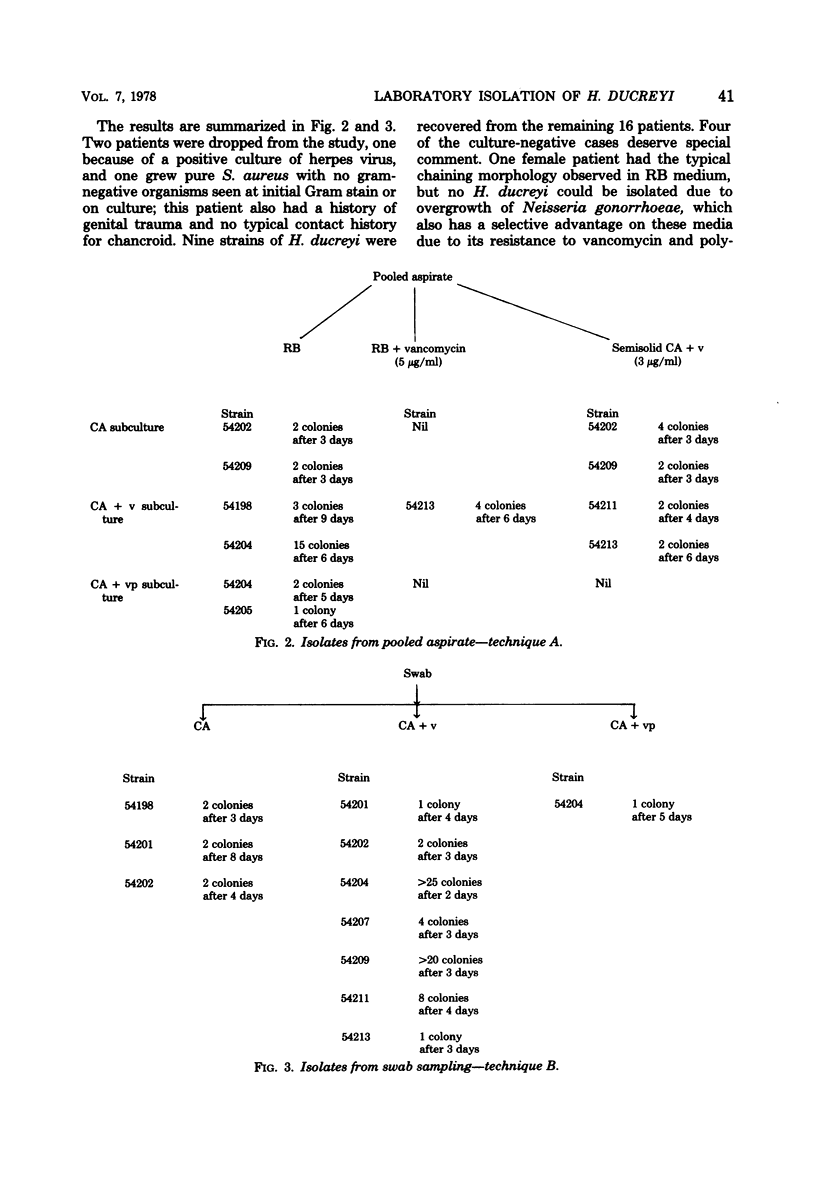
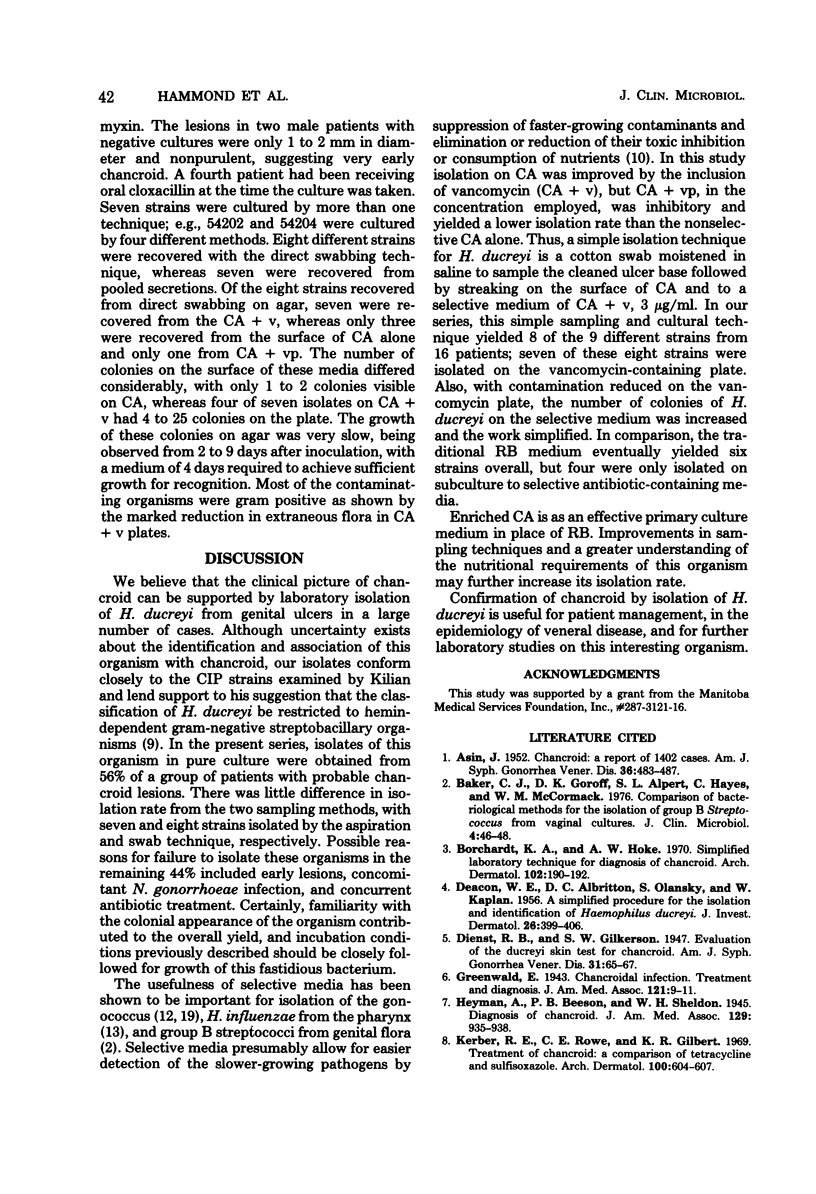
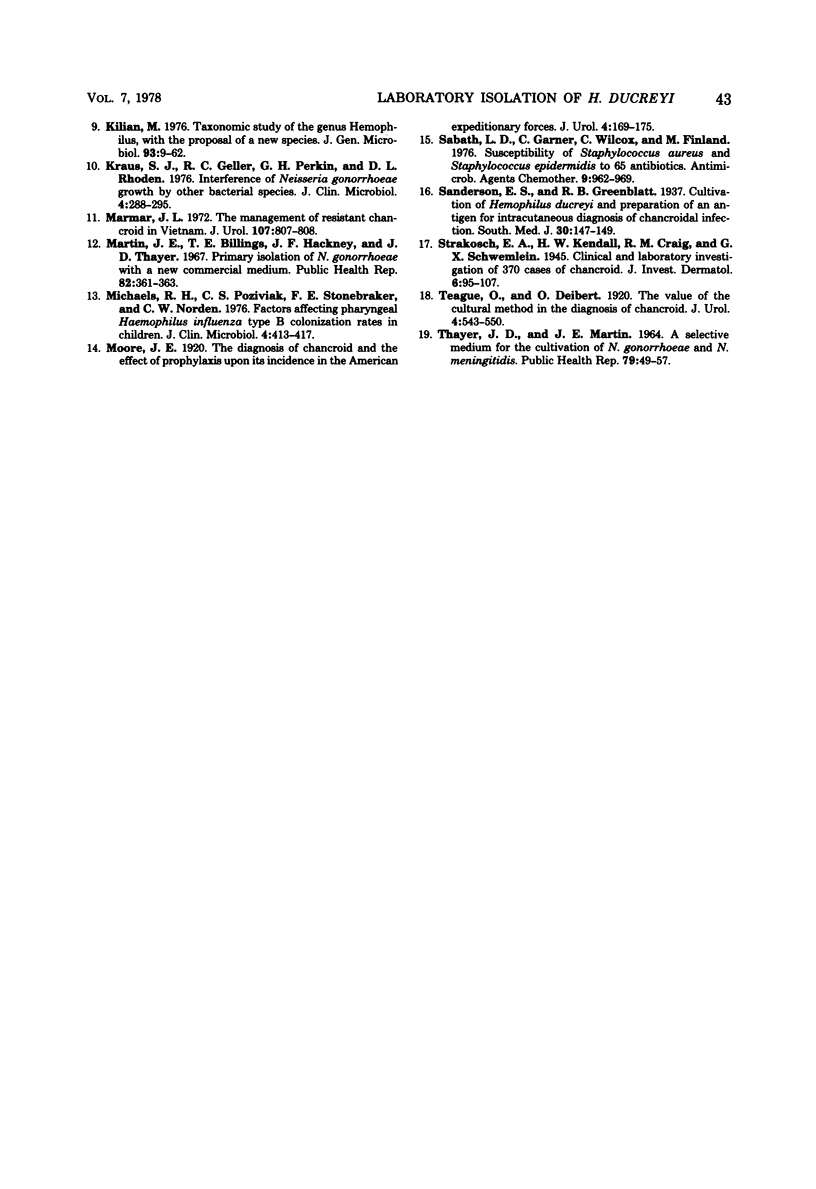
Selected References
These references are in PubMed. This may not be the complete list of references from this article.
- ASIN J. Chancroid; a report of 1,402 cases. Am J Syph Gonorrhea Vener Dis. 1952 Sep;36(5):483–487. [PubMed] [Google Scholar]
- Baker C. J., Goroff D. K., Alpert S. L., Hayes C., McCormack W. M. Comparison of bacteriological methods for the isolation of group of B Streptococcus from vaginal cultures. J Clin Microbiol. 1976 Jul;4(1):46–48. doi: 10.1128/jcm.4.1.46-48.1976. [DOI] [PMC free article] [PubMed] [Google Scholar]
- Borchardt K. A., Hoke A. W. Simplified laboratory technique for diagnosis of chancroid. Arch Dermatol. 1970 Aug;102(2):188–192. [PubMed] [Google Scholar]
- DEACON W. E., ALBRITTON D. C., OLANSKY S., KAPLAN W. V.D.R.L. chancroid studies. I. A simple procedure for the isolation and identification of Hemophilus ducreyi. J Invest Dermatol. 1956 May;26(5):399–406. doi: 10.1038/jid.1956.51. [DOI] [PubMed] [Google Scholar]
- Kerber R. E., Rowe C. E., Gilbert K. R. Treatment of chancroid. A comparison of tetracycline and sulfisoxazole. Arch Dermatol. 1969 Nov;100(5):604–607. [PubMed] [Google Scholar]
- Kilian M. A taxonomic study of the genus Haemophilus, with the proposal of a new species. J Gen Microbiol. 1976 Mar;93(1):9–62. doi: 10.1099/00221287-93-1-9. [DOI] [PubMed] [Google Scholar]
- Kraus S. J., Geller R. C., Perkins G. H., Rhoden D. L. Interference by Neisseria gonorrhoeae growth by other bacterial species. J Clin Microbiol. 1976 Sep;4(3):288–295. doi: 10.1128/jcm.4.3.288-295.1976. [DOI] [PMC free article] [PubMed] [Google Scholar]
- Marmar J. L. The management of resistant chancroid in Vietnam. J Urol. 1972 May;107(5):807–808. doi: 10.1016/s0022-5347(17)61144-3. [DOI] [PubMed] [Google Scholar]
- Martin J. E., Jr, Billings T. E., Hackney J. F., Thayer J. D. Primary isolation of N. gonorrhoeae with a new commercial medium. Public Health Rep. 1967 Apr;82(4):361–363. [PMC free article] [PubMed] [Google Scholar]
- Michaels R. H., Poziviak C. S., Stonebraker F. E., Norden C. W. Factors affecting pharyngeal Haemophilus influenzae type b colonization rates in children. J Clin Microbiol. 1976 Nov;4(5):413–417. doi: 10.1128/jcm.4.5.413-417.1976. [DOI] [PMC free article] [PubMed] [Google Scholar]
- Sabath L. D., Garner C., Wilcox C., Finland M. Susceptibility of Staphylococcus aureus and Staphylococcus epidermidis to 65 antibiotics. Antimicrob Agents Chemother. 1976 Jun;9(6):962–969. doi: 10.1128/aac.9.6.962. [DOI] [PMC free article] [PubMed] [Google Scholar]
- THAYER J. D., MARTIN J. E., Jr A SELECTIVE MEDIUM FOR THE CULTIVATION OF N. GONORRHOEAE AND N. MENINGITIDIS. Public Health Rep. 1964 Jan;79:49–57. [PMC free article] [PubMed] [Google Scholar]


